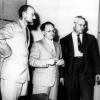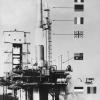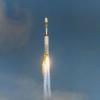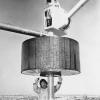ESRO and ELDO: science vs. technology
The European Space Research and Technology Centre
Ruimtevaartcentrum, by Polygoon-Profilti (producent) / Nederlands Instituut voor Beeld en Geluid (beheerder), is licensed under Creative Commons - Attribution-Share Alike.
The initial talks started by CERN scientists led to two international treaties in 1962: the European Launcher Development Organization (ELDO) and the European Space Research Organization (ESRO). As its name suggests, ELDO was formed to organize technical co-operation on a "launcher" (that is, a rocket) for sending items and possibly people into space.
ESRO, on the other hand, was all about scientific co-operation: making plans for space and interplanetary exploration, as well as the development of test satellites. ESRO soon linked well-known laboratories such as The European Space Research and Technology Center (ESTEC) in the Dutch town of Noordwijk; ESRANGE, the launching site in Kiruna, Sweden; and the ESLAR (later renamed ESRIN) laboratory in Frascati, Italy; all of which became key sites of development.
ELDO proved more controversial. On the one hand, it attracted the interest of many businesses in Europe wanting to capitalize on the high technologies being developed. On the other hand, many countries did not find the project attractive. Austria, Denmark, Greece, Norway, Spain, Sweden, Switzerland, and Turkey all opted out of the convention.
Neutral countries like Sweden and Switzerland cited worries that the program was developing a "dual-use" technology – there being a small difference between a rocket and a missile. Others were worried about the high costs of the program.
 Previous Story
Next Story
Previous Story
Next Story
How to cite this page
Alexander Badenoch, 'ESRO and ELDO: science vs. technology', Inventing Europe, http://www.inventingeurope.eu/story/esro-and-eldo-science-vs-technology
Sources
- Trischler, Helmuth and Kohlrausch,Martin. The Politics of Expertise in Europe: Creating, Organizing, Sharing Knowledge. Basingstoke: Palgrave, forthcoming.


















